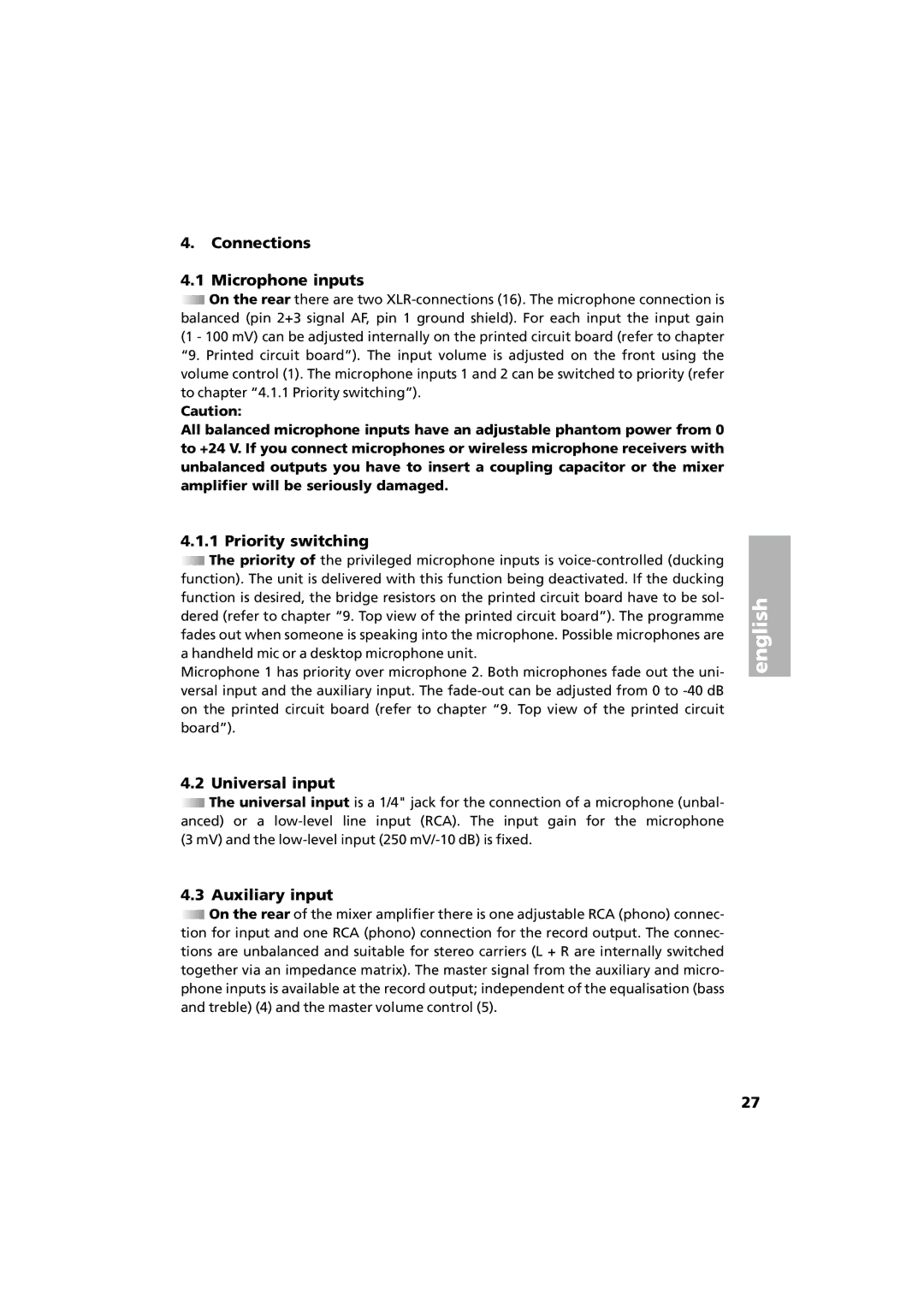MA 206, MA 212 specifications
Beyerdynamic, a prominent name in the world of audio technology, has expanded its offerings with the MA 206 and MA 212 microphones, both of which are engineered to cater to a wide range of professional audio applications. These microphones stand out due to their precision, versatility, and advanced technology, making them ideal choices for studios, broadcasting, and live performances.The MA 206 is designed for high-quality sound capture with its dynamic microphone design. Its cardioid polar pattern provides excellent feedback rejection, ensuring that ambient noise is minimized. This feature is particularly beneficial in live settings where multiple sound sources may compete for attention. The MA 206 also boasts a rugged construction, making it durable enough for extensive use in various environments. Its frequency response is tailored to capture the nuances of vocals, making it a preferred choice for singers and presenters alike.
On the other hand, the Beyerdynamic MA 212 takes audio capture a step further with its unique condenser technology. This microphone is equipped with a wide frequency response that allows it to capture a broad range of sound frequencies, from deep bass to high treble. The MA 212's supercardioid polar pattern ensures that it has a narrower pick-up area, which helps in isolating the sound source and reducing unwanted background noise. This makes it an excellent option for studio recordings where clarity and precision are paramount.
Both models incorporate Beyerdynamic’s proprietary technologies, such as advanced diaphragm design and high-quality internal components, ensuring exceptional sound fidelity. Additionally, the microphones are engineered to handle high sound pressure levels, making them suitable for loud sound sources without distortion.
Their ergonomic designs facilitate ease of use, with convenient mounting options and compatibility with various audio interfaces. Whether for recording, broadcasting, or live performance, the MA 206 and MA 212 deliver reliable performance and impeccable sound quality.
In conclusion, Beyerdynamic's MA 206 and MA 212 microphones exemplify the brand's commitment to excellence in audio technology. With their tailored features and robust construction, both microphones are set to meet the demands of audio professionals, ensuring that every sound is captured with clarity and precision. Whether in the studio or on stage, these microphones stand as symbols of Beyerdynamic’s legacy of innovation and quality in sound reproduction.
